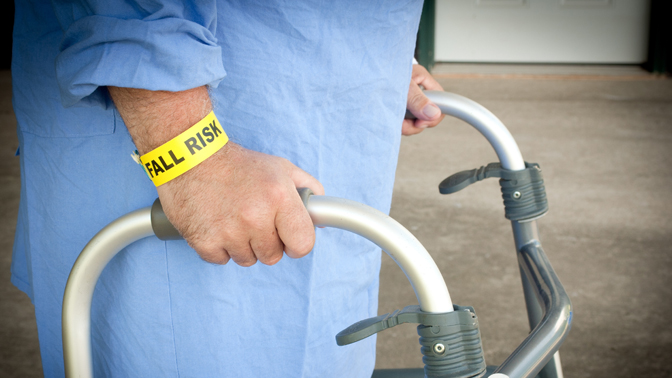
It can happen to anyone, anywhere and at anytime. Eventually, we all loose our footing and fall. Most of the time, a fall results in no more than a bruise and a few scratches. However, for some people, falls occur more frequently and the consequences can be much more severe.
Older adults are one of the demographics at a high risk for falls. It is estimated one third of Canadians over the age of 65 take a tumble every year. Moreover, almost half of those who fall experience serious injuries, like fractures and sprains.
“There is evidence that likelihood of recovery from a fall is dramatically reduced the longer the person remains without help,” says Dr. Alex Mihailidis, a Senior Scientist at Toronto Rehabilitation Institute and a Scientific Director of the AGE-WELL Network of Centres of Excellence.
In order to decrease the response time to assistance after a fall, Dr. Mihailidis’ team is developing an automatic fall detection system, known as the HELPER system. The ceiling-mounted system is equipped with a camera, a computer processor and an infrared light array enabling it to detect falls during the day and night. When a fall occurs in the room, the system immediately sends an alert to the caregiver’s smartphone.
Recently, Dr. Mihailidis evaluated the performance of the HELPER system in a pilot test in a real hospital. Several older patients with dementia and nurses took part in the study. The HELPER system monitored a hospital room for 267 nights, during which the nurses carried HELPER system smartphones.
The researchers found that the system detected four of five falls. However, it also generated over 800 false alarms, which were attributed to the unexpectedly high level of activity and movements in the room—especially when nurses were caring for patients.
Although the nurses wanted to be notified of a fall as soon as it happened, they found the current version of the system burdensome because of frequent false alarms.
"Our findings add to our understanding of the value of technology in the care of older adults. Further development of the HELPER system will focus on reducing false alarms and ensuring that it meets the needs of the nursing staff. Combining video imaging with other types of sensors could improve performance and provide additional information to nurses—such as an image of a room—to determine whether or not a fall has actually occurred,” says Dr. Mihailidis.
This work was supported by St. Joseph Health Care London, the Academic Medical Organization of Southwestern Ontario, the Ontario Centres of Excellence and the Toronto Rehab Foundation.
Coahran M, Hillier LM, Van Bussel L, Black E, Churchyard R, Gutmanis I, Ioannou Y, Michael K, Ross T, Mihailidis A. Automated Fall Detection Technology in Inpatient Geriatric Psychiatry: Nurses' Perceptions and Lessons Learned. Can J Aging. 2018 Sep. doi: 10.1017/S0714980818000181.




